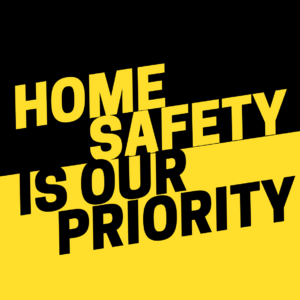Mar 5
Understanding and Helping with Hoarding Disorder

When Springwell staff members meet with older adults in their homes about services and resources, they often assess safety of the residence and offer recommendations to help keep the person safe while living the way they like. A recommendation may be as simple as removing a scatter rug or adding a grab bar in a shower to help prevent falls. Sometimes, more serious home safety concerns arise, and these concerns might be caused by a hoarding disorder.
Springwell recently welcomed Eileen Dacey, LCSW from the North Shore Center for Hoarding and Cluttering to increase our staff’s knowledge about hoarding disorders and offer tips about how to best help those we serve who are struggling with hoarding. A hoarding tendency may start at a young age, but it often becomes more serious as people get older. Dacey emphasized that individuals who enjoy collecting certain items and those who are comfortable living in a cluttered environment aren’t necessarily hoarders. A key difference is that the collections and clutter must not cause distress, safety issues or interfere with activities of daily life, as opposed to hoarding, which does.
Dacey explained that those with a hoarding disorder may feel distress at not being able to keep their possessions and being restricted from acquiring more things. Some hoarders feel they don’t want to be wasteful, so they save everything for a future use. Some fear losing important information, so they save all newspapers, books, mail, and paperwork. People who hoard are often worried by what they perceive to be memory problems and they think that saving everything will help them remember more details. Often in this situation, the real problem is that they’ve set a standard for remembering that’s frustratingly unattainable.
Severe hoarding disorder may put an individual at risk for serious injury or even death because of the environment that they live in. Falls, avalanches and structural concerns are among the risks. Springwell staff are trained to recognize signs of the disorder and the risks associated with it. They can then seek help from social workers with specific training in hoarding disorders.
The goal in helping someone with hoarding disorder is to keep people safe in their homes. Springwell staff can help advise family members and caregivers whose first impulse may be to “help” by getting rid of the clutter that these sudden. Our staff help explain that this kind of drastic action often results in extreme emotional distress, and we do not want to do more harm than the hoarding already creates.
With the goal of harm reduction, social workers trained in hoarding disorders guide hoarders through eliminating the safety issues of their living environment. They don’t touch belongings without explicit permission or declutter behind the person’s back. They don’t minimize the challenges faced, make decisions, equate the clutter with the person, argue or try to persuade. They model positive, adaptive behaviors, provide encouragement and emotional support, and show their belief in the hoarder’s ability. Some approaches for treating hoarding behavior may include cognitive behavior therapy. The social worker helps the family and caregivers understand and follow these guidelines if they assist with improving the hoarder’s safety.
A primary goal in caring for someone who hoards is harm reduction and because hoarding is a complex, multi-faceted phenomenon, trained professionals can offer valuable assistance to hoarders, their families, and caregivers. Are you concerned about an older adult’s safety in their home? Contact Springwell at 617-926-4100 to discuss a safety assessment and assistance.


